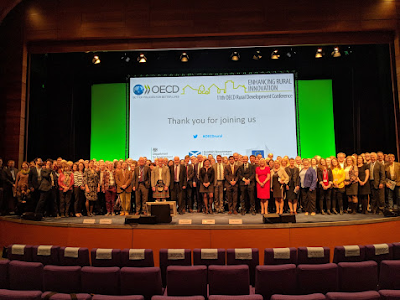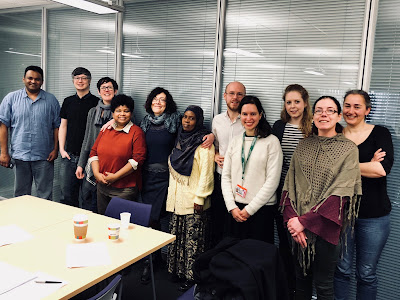CRE Research Fellow Paul Cowie reflects on a Northern Powerhouse Business Summit hosted by CRE.
We have all seen huge changes in the world during our lifetimes – many beneficial but some alarming – and now the 4th Industrial Revolution is gathering pace and set to alter many more aspects of the way we live and work. So it seemed appropriate that a workshop CRE hosted as part of the Northern Powerhouse Business Summit kicked off with delegates being asked to highlight their hopes and fears.
Because we were a group with a particular interest in the rural, it’s not surprising that a hope expressed by many participants was that rural would be treated as an equal partner in debates about the future, that rural areas would be seen as places for innovation and enterprise in the same way as cities. As is so often the case, connectivity – both physical and technological was a source of frustration and contributors expressed the feeling that retaining a skilled and young workforce was key to a successful future for the countryside. Could devolution also present opportunities? As it starts to take shape in our region rural communities would certainly be well advised to position themselves to take advantage of it. New technologies, designed in partnership with those communities themselves, could prove to be a powerful tool for rural development. Alternatively, there is still the possibility that rural areas are seen as backward and areas of tradition so do not need the same levels of connectivity and technology as urban areas. This then reinforces the framing of rural as non-technological creating a self-fuelling feedback loop.
I had a sense of real fear that the rural could be neglected again in policy terms, and that it is fated always to be defined against urban. Can we keep that young workforce if they are being forced out of home ownership by holiday homes and commuters? Must the countryside become a dormitory for the town or a theme park for tourists? Is the debate about rural connectivity destined to start and finish with the issue of broadband?
But could the future look really quite different, in ways that would have seemed impossible just ten, even five years ago? We heard four provocations which highlighted different developing technologies: a trial of autonomous vehicles by the Lake District National Park and the future of mobility as a service in rural areas; augmented and virtual reality that Northumberland National Park is employing to enrich the visitor experience and reach a new audience; work on the future of food production by the Government Office for Science; a presentation from CRE on the opportunity for distributed power stations using rural community buildings.
This helped to unleash some creativity in us all. Three ideas were based around the idea of a rural internet of things (IoT). It was acknowledged that to take advantage of next generation technologies, rural areas need to infrastructure to support them. A rural IoT platform which encompassed a broad spectrum of systems (5G, LoRaWAN and Wi-Fi) which are open to anyone to deploy new technology in rural areas. The ideas ranged from supporting new businesses through the IoT to smarter delivery of public services in rural areas. Another idea built on the distributed power station provocation. Community owned renewable energy installations would be combined with battery storage and grid connectivity to generate a revenue for rural communities. The last idea built on two of the provocations. In this case the autonomous vehicle would be a mobile entertainment venue with AR/VR built in to give rural audiences a range of entertainment experiences in their own community.
But even these ideas may be too conventional. Perhaps the future could look more different than we can imagine.









